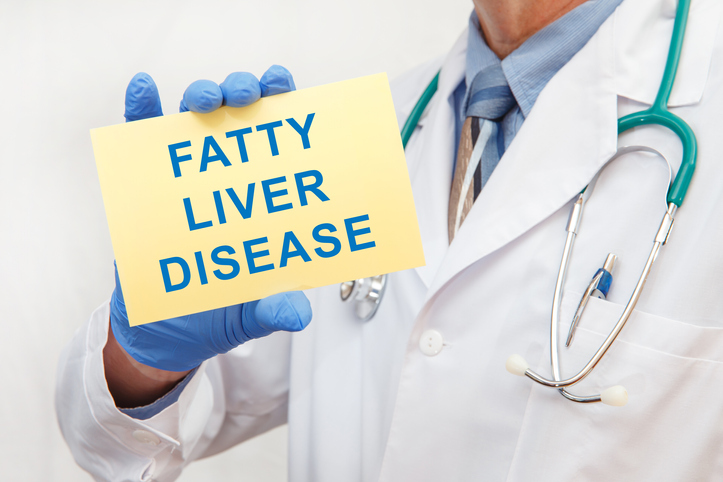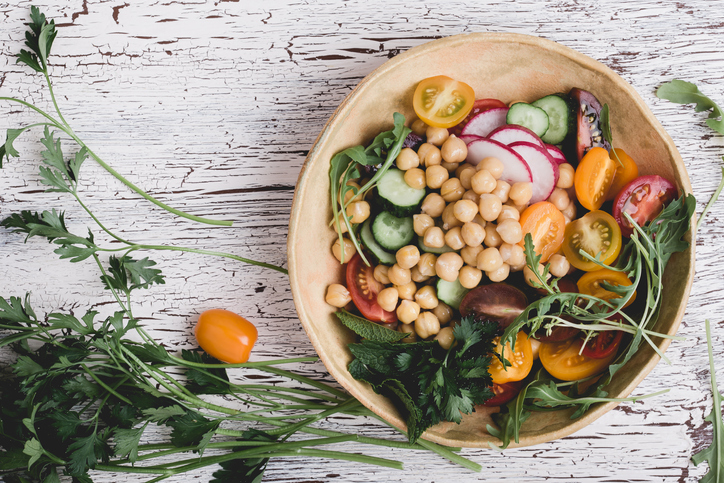A ‘Green Mediterranean Diet’ May Help Fight Fatty Liver Disease

By Joy Stephenson-Laws, J.D., Founder
So many people attribute poor liver health to just heavy alcohol consumption. Yes, it is true that drinking excessive amounts of alcohol may lead to alcoholic fatty liver disease (also called alcoholic steatohepatitis).
“Your liver breaks down most of the alcohol you drink, so it can be removed from your body. But the process of breaking it down can generate harmful substances. These substances can damage liver cells, promote inflammation, and weaken your body's natural defenses,” according to the National Institutes of Health (NIH).
“The more alcohol that you drink, the more you damage your liver. Alcoholic fatty liver disease is the earliest stage of alcohol-related liver disease. The next stages are alcoholic hepatitis and cirrhosis.”
It is important to note that there is non-alcoholic fatty liver disease (NAFLD). This condition can occur in people who drink little to no alcohol. Basically, an excessively fat liver is an unhealthy and possibly damaged liver. An accumulation of excess fat in the liver may be caused by being overweight or obese (which, of course, is usually the result of eating a poor, nutrient-void diet) and leading a sedentary lifestyle. People who carry a lot of belly fat (visceral fat) are especially prone to developing NAFLD. Visceral fat grows deep inside the stomach and may wrap around your vital organs (such as the liver). Having this type of fat may also increase the risk of type 2 diabetes.
(It is normal for the liver to have some fat. But if more than five to 10 percent of the liver’s weight is fat, then it is considered to be a fatty liver).
According to the American Liver Foundation, NAFLD is the most common chronic liver condition in the United States. An estimated 25 percent of adults in the U.S. have NAFLD. Furthermore, a recent report from the University of Michigan suggests that nearly 83 million Americans have NAFLD and it can even be seen in people with more lean body types. So this may mean that you don’t necessarily need to have a lot of visceral fat in order to develop NAFLD.

The liver is the largest organ inside of the human body. It is responsible for more than 500 vital functions and weighs about three pounds! Along with increasing the risk of type 2 diabetes, NAFLD increases the risk of heart disease (which is the leading killer of both men and women in the U.S.).
It is very clear to me that diet plays a major role in this problem, especially because NAFLD is sometimes seen in lean people. Many people may look lean and healthy but in reality have very poor diets. As a result, they may have conditions such as NAFLD and type 2 diabetes. We really cannot ‘judge a book by its cover’ when assessing health.
Many people eat way too many processed and ultra-processed foods. The good news is that we can take control and help prevent diseases such as NAFLD by maintaining a healthy diet. There is evidence which suggests that a Mediterranean diet can be very effective in preventing and reversing a fatty liver.
The Mediterranean diet emphasizes eating fresh fruits and vegetables, whole grains, healthy fats, nuts and seeds. This diet also encourages eating dairy and red meat in low to moderate amounts. Fish and poultry are usually the preferred protein choices for this diet.
And now, a recent study suggests that a green Meditterean diet in particular may be especially effective in the fight against NAFLD.
“This modified MED diet [which was developed by the research team] is rich in vegetables, includes daily intake of walnuts (28 grams), and less processed and red meat,” according to this Medical Xpress report discussing the study.
“It is enriched with green components, high in polyphenols, including three to four cups of green tea/day and 100 grams (frozen cubes/day) of a Mankai green shake. Mankai, an aquatic green plant also known as duckweed, is high in bioavailable protein, iron, B12, vitamins, minerals, and polyphenols.”
The study, which was conducted in Israel, took 294 workers in their 50s who had “abdominal obesity” (lots of belly fat). The workers were put on one of the following three diets:
- Healthy dietary regimen
- Mediterranean diet
- Green Mediterranean diet
Participants were also put on an exercise program and were even given a free gym membership. MRI scans were performed on each participant both before and after the diet and exercise changes to determine their amount of intrahepatic (within the liver) fat.
Overall, healthy eating helped.The results revealed that the green Mediterranean diet reduced the highest amount of liver fat. The good news is that every diet led to reduced liver fat.
“However, the green MED diet resulted in the greatest reduction of hepatic fat (-39%), as compared to the traditional Mediterranean diet (-20%) and the healthy dietary guidelines (-12%). The results were significant after adjusting for weight loss,” according to the Medical Xpress report.
In my opinion, the biggest takeaway from this is that it is within our power to be able to do something about NAFLD. It appears that eating more greens and consuming healthy beverages such as green tea can make a great difference. Ultimately, it is important to avoid those processed, nutrient-void foods and eat plenty of fresh, whole foods such as nutrient-dense vegetables.
As always, it is important to talk to a competent healthcare professional about what kind of diet you are following. He or she may adjust your diet in a way that will be most effective at combating NAFLD and other chronic diseases that are usually the result of a poor diet.
It is also important to take routine nutrient tests in order to determine if you are nutritionally balanced. If you are not, a competent healthcare professional can work with you on making the necessary dietary changes and recommend quality supplements if necessary.
Finally, move your body on a daily basis (even if it is just for 10 minutes). Avoid sitting for prolonged periods of time as much as possible, and know what nutrients you need to fuel your body both before and after a workout.
Enjoy your healthy life!
Disclaimer: This article is not intended to provide medical advice. Please consult with your doctor or another competent healthcare practitioner to get specific medical advice for your situation.
The pH professional health care team includes recognized experts from a variety of health care and related disciplines, including physicians, attorneys, nutritionists, nurses and certified fitness instructors. This team also includes the members of the pH Medical Advisory Board, which constantly monitors all pH programs, products and services. To learn more about the pH Medical Advisory Board, click here.







